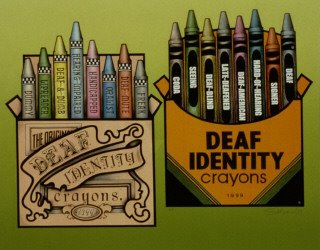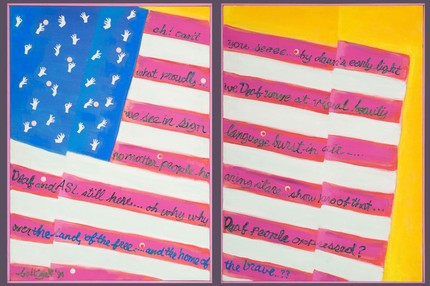As s.e. wrote about in a post earlier this week, I am a cartoonist in addition to all the other crap that I do. I’ve been drawing (and writing) for most of my life, and finding the perfect pen has been something of a wild turkey-chase with mixed results. I know that an entire post devoted to pens may seem silly, particularly given the more serious things that I have written about here on FWD. Re-reading some of Amanda‘s Things That Make My Life Easier posts has inspired me to write about…well, writing (and drawing) implements, because the right ones do make things easier for me.
I first read about the pain-reducing benefits of felt-tip pens in the second edition of Starlanyl and Copeland’s Fibromyalgia and Chronic Myofascial Pain: A Survival Manual; the authors, both medical professionals, include the use of felt-tip pens in a lengthy list of tips designed to reduce pain on an everyday basis. Felt-tip pens tend to be easier on the hands and joints. My one huge issue with felt-tips, however, is that many of them produce stronger lines than I would like. This is more of a problem when I attempt to use them for artistic purposes, as I don’t mind a little more heft in my hand-written notes and scribbles. I do use felt-tips on occasion in my cartoon work — especially for panel borders and heavy lines — just not very often.
Felt-tips are good for writing, but depending upon what sort of lines you’d like in your artistic works, the ease of use that felt-tips produce may be their only advantage. Obviously, they’re not the greatest for detail work. I tend to shy away from brushes and pens that require the use of an inkwell or a separate bottle of ink, as the gorgeous lines one can produce with those tools so often translates into absolute hell on my hand and wrist joints, plus a lot of repetitive motion from dipping the brush or pen into the ink and bringing it back to the page (which often equals further hell).
Ball-point pens that don’t have a lot of ink “flow,” in my experience, aren’t great for cartooning either, though they can be useful for storyboards and quick sketches. The ball-points that have worked the most effectively for me have been the “business”-type pens that most folks associate with actual business work. Perhaps people in business have to write things quickly and therefore cannot depend on crappy ball-points and/or face the frustration that inevitably arises when said crappy ball-point runs out of ink. Non-crappy ball points, such as the Uni-ball line of products, may be a bit more expensive than “traditional” ball-points, but if you want a smooth line that is not going to translate into extreme wrist or hand pain, a “business” pen of this sort might be for you.
Another pen type with which I have had some success has been actual drawing pens; many brands are available at art-supply stores or bookstores. I have found that experimentation with different types of pens is a good bet, if you’ve got the time for it (and assuming that you are cool with dropping a couple bucks on pens that might be either awesome or a total disaster). The Preppy fountain pen, made by Japan’s JetPens, may be a good bet for people who would like to experiment with fountain pens and the lines that these pens can create, but who may not have the time, energy or inclination to use a more traditional fountain pen (it has a reloadable ink-cartridge system that is very convenient). There is also the Stabilo brand, which I discovered quite by accident in the clearance rack of an art supply store (I bought a couple specifically because they were on sale). I use the Point 88 type because it’s light, comfortable to hold and can do excellent detail work, but your artistic/writing mileage may vary.
There is no “perfect” pen, of course, but there are some damn good ones out there if you’ve got the inclination to experiment.

